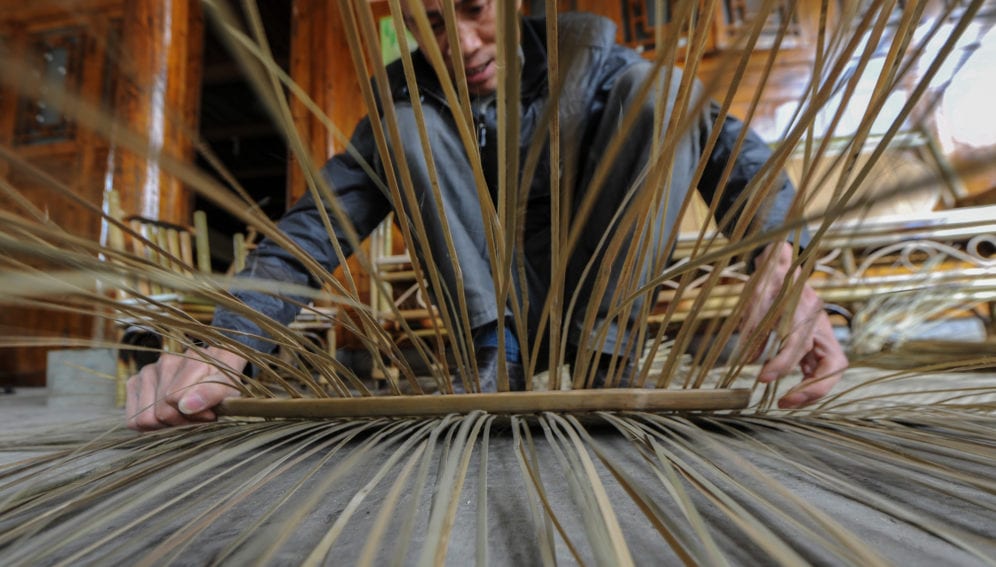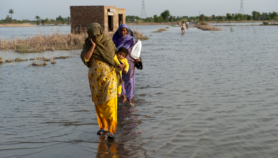By: Hans Friederich
Send to a friend
The details you provide on this page will not be used to send unsolicited email, and will not be sold to a 3rd party. See privacy policy.
Bamboo can be vital in mitigating climate change and alleviating poverty but remains ignored, say experts.
Bamboo covers more than 30 million hectares of land and is a common sight for rural communities across tropical and subtropical Africa, Asia and Latin America. Fast-growing and flexible, several species grow up to 90 centimetres a day. Some bamboo characteristics are well known, but its ability to lift people out of poverty is frequently overlooked.
While bamboo is associated with panda food in the Global North, many developing countries regard it as little more than ‘poor man’s timber’— a cheap substitute for timber products.
This may be about to change. At the Global Bamboo and Rattan Congress, referred to as BARC, held in Beijing last month by the International Bamboo and Rattan Organisation and China’s National Forestry and Grassland Administration (NFGA), 1,200 participants from almost 70 countries highlighted the uses of bamboo and agreed on a plan for the plant’s future.
“From poor man’s timber to green gold, the science is there to support bamboo’s importance for sustainable development. What is needed is urgent action to get the right policies and investment for this wonder plant”
Hans Friederich, International Bamboo and Rattan Organisation
Millions of people across the world make a living through bamboo, including some eight million in China alone. According to NFGA Administrator, Zhang Jianlong, the sector employs almost 10 million people, and has reduced poverty in China’s remote rural areas.
With an estimated global trade value of US$60 billion, the bamboo sector clearly has vast potential for poverty alleviation. Innovative uses of bamboo include heavy duty drainage pipes and wind turbines and in post-disaster housing and schools.
Fighting climate change
Moreover, a number of bamboo species are potential tools for carbon sequestration and combatting climate change. Bamboo plants store carbon at a fast rate, and bamboo products can effectively ‘displace’ more emissions-intensive materials such as cement, steel and plastic). Recent INBAR research suggests (well-managed) bamboo can store 200 to 400 tonnes of carbon per hectare per year.
With such high carbon storage rates, there is clearly potential for countries to integrate bamboo into their climate mitigation plans. Says Patricia Espinosa, executive secretary of the UN Framework Convention on Climate Change: “Bamboo and rattan can make an important difference in the fight against climate change. Nature-based solutions like bamboo do not just contribute to sustainable development, they also help build the kind of world we want.”
According to Gunter Pauli, the founder of My Blue Economy, bamboo’s lightweight nature and high natural strength make it an excellent construction material, earning it the name “vegetal steel” among architects around the world. The flexibility of bamboo structures makes them ideal for earthquake-resilient housing as demonstrated while rebuilding schools in Nepal following the 2015 earthquake.
But if bamboo is so critical to sustainable development, why is it not more used?
Awareness is a challengeA key challenge is lack of awareness about bamboo’s uses. The BARC ended with commitments to recognise the benefits of these plants by governments, representatives of research institutions, development organisations, construction firms and the private sector.
Chinese Premier Li Keqiang led the way at BARC by recognising the value of bamboo and rattan in promoting green growth, addressing climate change, improving the environment, increasing incomes, and expanding South-South cooperation.
From poor man’s timber to green gold, the science is there to support bamboo’s importance for sustainable development. What is needed is urgent action to get the right policies and investment for this wonder plant.
Hans Friederich is the director general of the International Bamboo and Rattan Organisation, a multilateral development organisation of 44 member-states which promotes the use of bamboo and rattan for sustainable development. Friederich is currently based in Beijing, China, and has over 30 years’ experience working in Africa, Asia and Europe in natural resources management.
This piece was produced by SciDev.Net’s Asia & Pacific desk.














